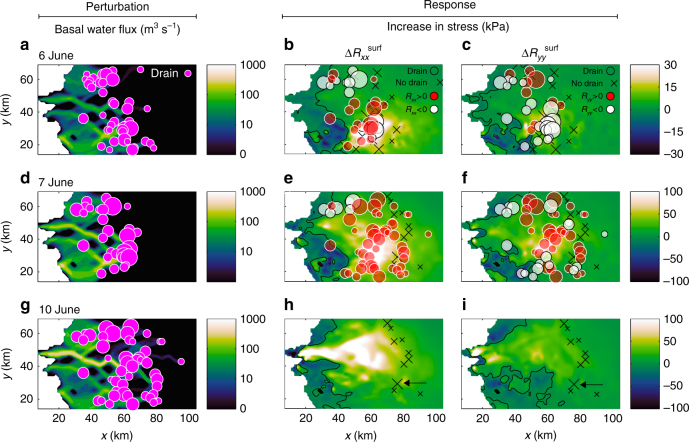Fig. 4.
Dynamic triggering of cascading lake drainage. a Enhanced flux in the subglacial drainage system caused by 43 lakes observed to drain on 6 June. b Change in resistive stress in the x direction (, kPa) on 6 June relative to the day before. Dots show 30 additional lakes observed to drain the next day (7 June). The colour of dots denotes lakes that drained where ice flow in the x direction was extensional ( > 0, red dots) or compressional ( < 0, white dots) before the 30 additional lakes drained. The locations of 16 lakes that had formed but did not drain that day are marked with black crosses. c Same as b but showing change in resistive stress in the y direction (, kPa). Note how 20 of the 30 lakes drained where ice flow was extensional in either the x direction or the y direction or in both directions before drainage occurred. The magnitudes of and are shown in Fig. 3. d Basal water flux from the 30 lakes that drained on June 7. e associated with the lakes that drained on 7 June. Dots show additional 51 lakes which drained by 10 June (incl. 8–9 June when clouds prevented lake observation). f Same as e but showing . Note how 47 of the 51 lakes drained where ice flow was extensional in at least one direction before drainage occurred. g Basal water flux from the 51 lakes that drained during 8–10 June. h associated with lakes draining 8–10 June. Crosses mark 10 lakes that remained unaffected by the tensile shock and did not drain. Arrow identifies the only lake to persist from 6 June to 10 June. i Same as h but showing . Note how drainages increasingly occur when ice flow has switched from compressional to extensional and how the location of unchanged lakes on 10 June falls outside the region of the tensile shock

